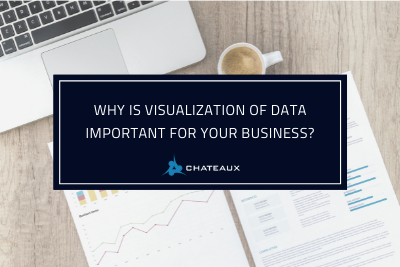By Hugo Toledo, Senior Business Intelligence Architect
In the last post, Frameworks is #1, we discussed how checklists and their big brothers, frameworks, help you develop new solutions by providing a structure for identifying and closing gaps. In this installment, we’ll go into one of our preferred frameworks, TDWI’s MAD (Measure, Analyze, Drill) Framework, and show you how we use it to ensure our clients can progress along a gently sloping curve to BI maturity, making their investments rationally but with the understanding that they are providing greater clarity and a stronger base on which to make business decisions.
First, some background information: The Data Warehousing Institute (TDWI), has used Geoffrey Moore’s chasm metaphor to describe the path to business intelligence maturity since 2004. Here is one of the representations they’ve published to convey this approach:
Descriptions and examples are provided for each stage, as shown here in this excerpt from Interpreting Benchmark Scores Using TDWI’s Maturity Model for Stage 1 – The Infant Stage:
The Infant stage is the conglomeration of two stages from the original BI Maturity Model created in 2004: Prenatal and Infant. These stages are flip sides of the same coin and one leads directly to the other, as we shall see.
Operational Reporting: The Prenatal sub stage represents a pre–data warehousing environment where an organization relies entirely on operational reports for information. An operational report runs directly against an operational system and shows data for that system only. In some cases, it may contain data from multiple systems if an organization consolidates data into an operational data store. In general, however, operational reports are static and inflexible and show a limited range of data for a limited set of processes. If a user wants to view a slightly different set of data in a slightly different way, the IT department usually needs to code a new custom report, a process that may take days, weeks, or months, depending on the complexity of the report and the current backlog of requests.
Spreadmarts: The lack of flexibility of operational reports causes certain users to take matters into their own hands, which gives rise to the second half of the stage. These users create their own reports using whatever tools are handy—usually a spreadsheet or desktop database (e.g., Microsoft Access). They collect, clean, transform, aggregate, and format data for individual or group consumption, essentially performing all the functions of a data mart or data warehouse. The end result is something called a spreadmart—a spreadsheet or desktop database on steroids acting as a data mart or data warehouse. Other names for spreadmarts are data shadow systems, analytical silos, and human data warehouses.
While spreadmarts give business decision makers the data they crave, they have significant downsides. Spreadmart creators, who are typically high-priced business analysts, waste an incredible amount of time collecting and massaging data—tasks that a data mart or data warehouse is designed to do. Worse yet, the analysts define terms and metrics according to their own parochial views of the business, creating a kaleidoscope of misaligned data silos that aren’t easily reconciled. Without a single version of the truth, executives can’t gain an accurate view of business operations to help them make smart decisions, and they risk falling out of compliance with financial regulations regarding information transparency and accuracy. More than one executive has commissioned a data mart or data warehouse primarily to stem the proliferation of spreadmarts.Excerpt from Interpreting Benchmark Scores Using TDWI’s Maturity Model © 2007 TDWI
To advance your organization’s Business Intelligence maturity, you must focus on more complex challenges. After you’ve dealt with the basics of establishing a reliable infrastructure, improving your data quality, and publishing high-value metadata, you are ready to focus on more strategy-focused approaches to solutions. This is where the MAD framework comes in.
Another of TDWI’s innovations, the MAD framework was first described in 2007, the framework takes its name from the three key abilities one should expect from BI in general, and dashboards in particular: Monitoring, Analysis, and Drill to detail.
As more vendors took to this approach and extended it, Wayne Eckerson, director of TDWI Research, extended the MAD framework to represent the current and future domains of Modeling, Advanced Analytics and Do (Collaborate and Act).
So how does Chateaux use the MAD framework? The MAD framework enables a common understanding of where BI work falls and where you want it to go. What it doesn’t do is provide the checklist part of the framework. This is where concept maps come in. Using customer-specific concept maps, similar to the TDWI’s reference example, below, we are able to focus your organization on the key goals of your initiatives. Applying expected value and other qualitative measure approaches to this selection, enables us to very effectively focus the organization on where they should expect to mine the greatest value and what those results will look like.
If you’d like to learn more about TDWI, their Maturity Benchmarks, and membership, visit www.tdwi.org. You can also email or give us a call and we’ll schedule time to help you navigate the information and tools available from TDWI and other sources on this topic.
How is your company’s BI Maturity? Have you had a benchmark assessment? What about the MAD framework or others: what are your success stories, tips and cautionary tales?












